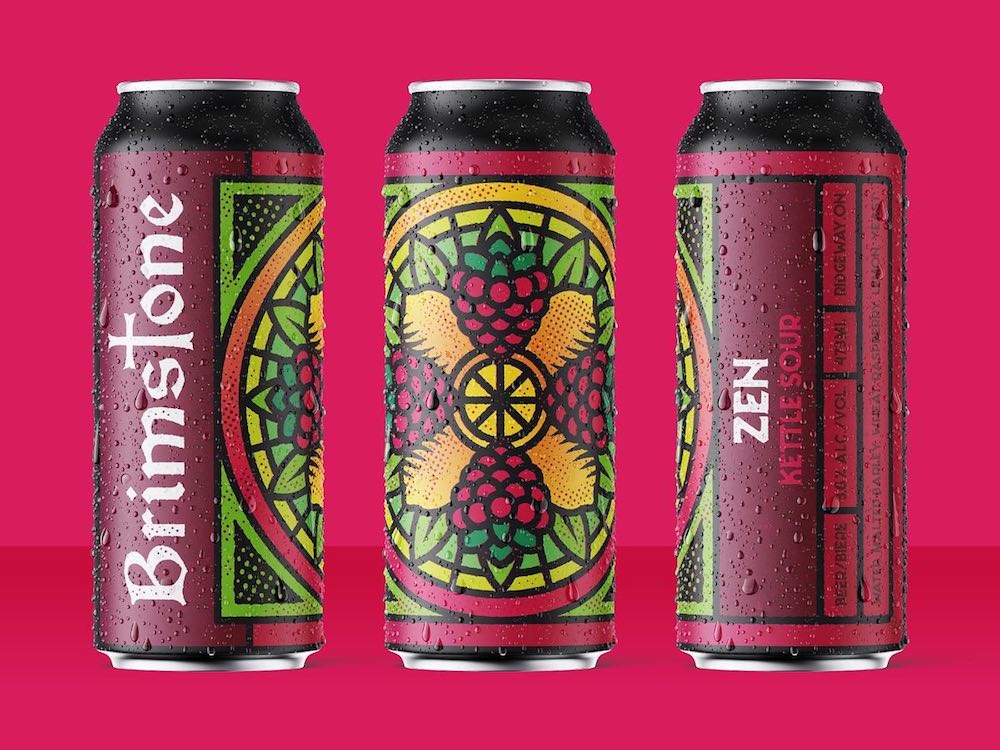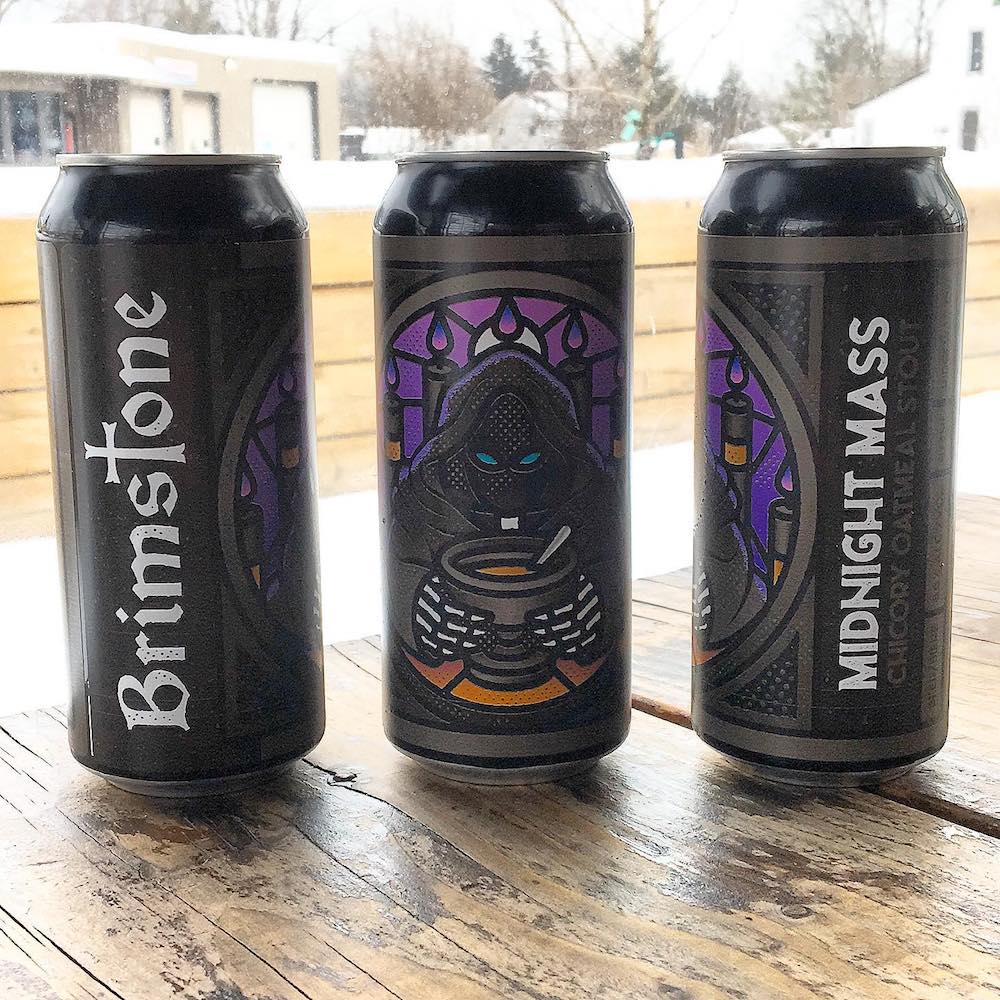By Stephen Beaumont
The easy intro to any story about Brimstone Brewing revolves around its location inside a decommissioned church. But as someone entering his fourth decade of writing about beer, I’m afraid that’s a bit of old hat for me.
You see, breweries in churches are nothing new or even particularly unusual these days. I most likely commented on the uniqueness of placing a brewhouse where a church alter had once stood when I first wrote about Pittsburgh’s Church Brew Works not long after it opened in 1996, and I definitely made note of its unlikely location when I composed the entry for Ontario’s own Church Key Brewing in the 2001 second edition of my Great Canadian Beer Guide.

But a brewery setting up in a former church in 2012, as did Brimstone? Ho-hum.
Better, I think, to focus upon the role of the brewery and its Sanctuary Centre neighbour in building the community of Ridgeway, its hometown. Because ever since architect Jason Pizzicarola and his wife Nadine purchased the former church in 2011, that’s precisely what has been happening.
The Sanctuary Centre event space was the first institution to be housed in the church, assuming the upper level and hosting everything from concerts to yoga classes and weddings. According to Brimstone’s taproom manager Jamie Gallucci, it has played an important role in not just providing entertainment and recreational options for Ridgeway, but also in the development and growth of the community.
“The whole area has really come back to life over the last few years and,” says Gallucci, adding that the return to activity of nearby Crystal Beach has also helped fuel the area’s growth.

It wasn’t in Pizzicarola’s original plans to add a brewery to the building’s basement, though. That arrived with former Propeller Brewing (Nova Scotia) brewer Rod Daigle, who approached him with the idea in 2012. The brewery opened not long after and has been a staple of Ridgeway ever since.
(Daigle departed the venture in 2018, leaving the Pizzicarolas as sole owners.)
“The community has been highly supportive of the brewery since we opened in 2012,” says Pizzicarola, “When we started, craft beer was not popular in our town, (but) they embraced us and the beer industry. Without their support, we would not be on the brink of our 10 year anniversary.”
Helping matters along was the arrival in 2015 of brewer Zack Gagnon, one of Niagara College’s first brewing school grads, who arrived via a quartet of other Ontario breweries and has, according to Gallucci, been instrumental in improving the quality and consistency of the brewery’s offerings. The building of a four-seasons patio in 2017 further advanced the popularity of the brewery, not to mention inadvertently equipping them with a useful tool for surviving the travails of the pandemic.
Today, with the promise of COVID restrictions being soon eased, Brimstone is well set to resume its role as a community hub and welcome back all its eager parishioners. I mean, imbibers.
A Brimstone Six-Pack

Zen (3.6%): This is what’s known as a ‘kettle sour,’ meaning that bacteria, usually lactobacillus, has been added to the wort prior to boiling in order to acidify the beer. It has also had raspberry and lemon included, which yields a pinkish beer with a citrus-raspberry nose and refreshingly tart, dry and refreshing raspberry character with a tangy, quenching finish. Not the most complex of beers, but a suitable, and suitably low alcohol, sipper for the summer heat.

Let There Be Lite (4%): Brewed in collaboration with Grist Craft Kitchen & Brewery, coming soon to St. David’s, rice is used to lighten the body of this hazy, sand-coloured lager. That rice is in evidence on the grainy, lightly grassy nose, but far less apparent in a body that starts with a soft cereal note, grows more crisp and grassy in the middle, and finishes with a wonderfully proportional note of drying bitterness. Same alcohol content as the Big Brewery light beers, but several times the flavour and balance.

Punk Rock Pilsner (4.6%): The exception to the brewery’s ‘reverential’ labelling, this is a dry-hopped Pilsner, meaning that hops have been added during or post-fermentation, a process that dramatically increases their olfactory effect. And boldly aromatic this cloudy pilsner certainly is, with spicy aromas of green leaf, orange, and stone fruit. On the palate, it is decidedly more traditional, with a mild and dry, candied grain entry, a slightly bitter body and a refreshing finish that is dry, dry, dry. Just the sort of beer I wish had been around in my punk rock days.

Enlightenment (5%): First developed as a Pale Ale, this is now billed a Blonde and, indeed, that is how it presents itself, with a faintly hazy gold countenance and a soft, cereally aroma carrying notes of leafy herbs and a hint of fresh cut grass. On the palate, it’s all gentle herbal notes wrapped around off-dry caramel with hints of bitter orange, finishing dry and grassy. A solid lunchtime companion to a ham and cheese sandwich.

Sinister Minister (7%): The brewery’s flagship and most popular beer, as well as the only one currently in the LCBO, this is a refreshingly Old School take on the IPA, hazy appearance notwithstanding. Copper coloured, it has a rich citrus and peach aroma, accented by hints of blackberry and forest floor, and a body that presents as much malt as it does hop – almost a rarity in today’s craft beer market – with more stone fruit, some lemon, lime and grapefruit zest, a background of lovely caramel, and a hit of grapefruit juice cut with berry notes on the finish. Simply put, the IPA you should be drinking.

Midnight Mass (6.6%): While part of me wishes that the brewery had succumbed to the temptation of listing the strength of this Chicory Oatmeal Stout at 6.66%, one sniff of this pitch black brew’s enticing rich, roasty, singed wood aroma is enough to make me forget about too-easy religious references. Even more so when I sample the smooth, robust, silky body, which begins with a touch of porridgey sweetness, proceeds to a lovely, off-dry roasted molasses and mocha middle, and finishes with a delightful flourish of burnt grain. And about that strength? It’s hidden quite well, so beware the easy quaffability of this tasty stout.
About Stephen Beaumont
Stephen Beaumont is one of the world’s leading writers on beer and spirits, with 15 books to his credit, including Canadian Spirits: The Essential Cross-Country Guide to Distilleries, Their Spirits, and Where to Imbibe Them (with Christine Sismondo) and the upcoming, fully revised and updated third edition of The World Atlas of Beer (with Tim Webb).







Comment here